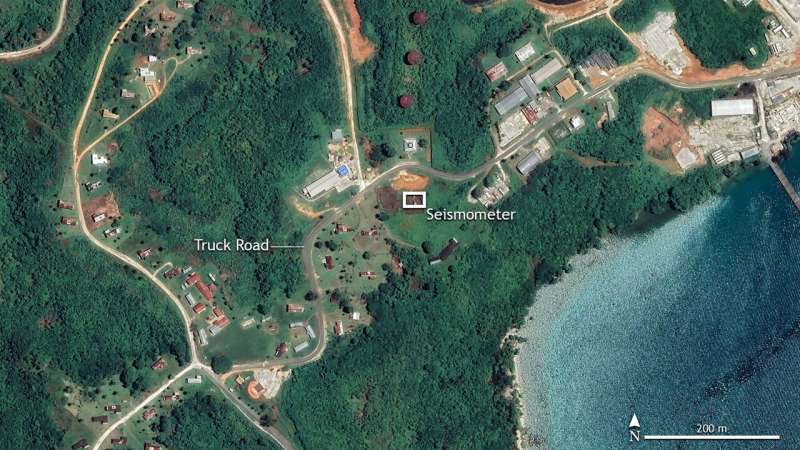The Interstellar Signal Initially Thought to Be from Aliens Turns Out to Be a Truck

March 7, 2024
The editorial team at Science X has rigorously reviewed this article following their established editorial guidelines. The following key points were emphasized to ensure the authenticity and credibility of the article's content:
- Fact-checked
- Reliable source
- Proofread
Affirmed by Johns Hopkins University
Research spearheaded by Johns Hopkins University suggests that perceived sound waves from a 2014 meteor fireball over Papua New Guinea were likely vibrations from a nearby truck. This reveals doubts about the recent claims that the materials retrieved from the ocean last year were from the said meteor.
Benjamin Fernando, a planetary seismologist at Johns Hopkins University who led the research explained, 'The signal altered its directions over time, perfectly aligning with a nearby road, right where the seismometer was positioned. While proving a signal doesn’t originate from a certain source could be hard, we can demonstrate that there are several signals like this, showing all the traits typical of a truck and not a meteor.'
The research findings will be discussed on March 12 at the Lunar and Planetary Science Conference, taking place in Houston. Media personnel are invited to join this presentation in person or virtually at 4:50 p.m. ET.
Following the entry of a meteor into Earth's atmosphere over the Western Pacific in January 2014, a seismic station in Papua New Guinea's Manus Island recorded ground vibrations. By 2023, these were linked to the materials at the ocean floor, where fragments of the meteor were believed to have fallen, and were identified as of 'extraterrestrial technological' (alien) origin.
Fernando, however, insists that this assumption is based on misinterpreted data. His team didn’t find any evidence of seismic waves resulting from the meteor entry. 'The fireball location was substantially distant from the identified oceanographic expedition area to retrieve meteor fragments, ' he highlighted. They were examining an incorrect signal and furthermore, searching in the wrong area.'
Fernando's team made use of data from Australian and Palau stations, specifically installed to record sound waves from nuclear testing. They found a more plausible location for the meteor landing, over 100 miles from the initially identified area. The materials extracted from the ocean floor were determined to be either small, commonplace meteorites or particles produced from other meteorites colliding with Earth's surface, accompanied by terrestrial contamination.
'We are quite confident that the material retrieved from the sea floor has no connection whatsoever to this meteor event. This is regardless of whether the retrieved material was a common space rock or a portion of an alien spacecraft,' Fernando forwarded.
Contributors to Fernando's research team include Constantinos Charalambous of Imperial College London; Steve Desch of Arizona State University; Alan Jackson of Towson University; Pierrick Mialle of the Comprehensive Nuclear-Test-Ban Treaty Organization; Eleanor K. Sansom of Curtin University; and Göran Ekström of Columbia University.
Document provided by Johns Hopkins University




